Methacrylic anhydride

Methacrylic anhydride structure
|
Common Name | Methacrylic anhydride | ||
|---|---|---|---|---|
| CAS Number | 760-93-0 | Molecular Weight | 154.163 | |
| Density | 1.0±0.1 g/cm3 | Boiling Point | 202.3±0.0 °C at 760 mmHg | |
| Molecular Formula | C8H10O3 | Melting Point | -20°C | |
| MSDS | Chinese USA | Flash Point | 84.4±0.0 °C | |
| Symbol |


GHS05, GHS07 |
Signal Word | Danger | |
Use of Methacrylic anhydrideMethacrylic anhydride is a typical polymerizable 1,6-diolefin. Methacrylic anhydride can form a soluble csyclopolymer by free-radical initiation. Methacrylic anhydride can spontaneously polymerize through the vinyl group and justifies the use of 2-6-di-tert-butyl4-methylphenol as an inhibitor[1][2]. |
| Name | Methacrylic anhydride |
|---|---|
| Synonym | More Synonyms |
| Description | Methacrylic anhydride is a typical polymerizable 1,6-diolefin. Methacrylic anhydride can form a soluble csyclopolymer by free-radical initiation. Methacrylic anhydride can spontaneously polymerize through the vinyl group and justifies the use of 2-6-di-tert-butyl4-methylphenol as an inhibitor[1][2]. |
|---|---|
| Related Catalog | |
| References |
| Density | 1.0±0.1 g/cm3 |
|---|---|
| Boiling Point | 202.3±0.0 °C at 760 mmHg |
| Melting Point | -20°C |
| Molecular Formula | C8H10O3 |
| Molecular Weight | 154.163 |
| Flash Point | 84.4±0.0 °C |
| Exact Mass | 154.062988 |
| PSA | 43.37000 |
| LogP | 1.82 |
| Vapour Pressure | 0.3±0.4 mmHg at 25°C |
| Index of Refraction | 1.443 |
| Stability | Stable. Flammable. Moisture-sensitive. |
CHEMICAL IDENTIFICATION
HEALTH HAZARD DATAACUTE TOXICITY DATA
|
| Symbol |


GHS05, GHS07 |
|---|---|
| Signal Word | Danger |
| Hazard Statements | H302 + H332-H315-H317-H318-H335 |
| Precautionary Statements | P261-P280-P301 + P312 + P330-P305 + P351 + P338 + P310 |
| Personal Protective Equipment | Eyeshields;Faceshields;full-face respirator (US);Gloves;multi-purpose combination respirator cartridge (US);type ABEK (EN14387) respirator filter |
| Hazard Codes | Xn:Harmful; |
| Risk Phrases | R20;R37/38;R41 |
| Safety Phrases | S26-S39 |
| RIDADR | UN 3265 8/PG 2 |
| WGK Germany | 1 |
| RTECS | OZ5700000 |
| Packaging Group | II |
| Hazard Class | 8 |
| HS Code | 2916209090 |
| Precursor 9 | |
|---|---|
| DownStream 9 | |
| HS Code | 2916190090 |
|---|---|
| Summary | 2916190090 unsaturated acyclic monocarboxylic acids, their anhydrides, halides, peroxides, peroxyacids and their derivatives。supervision conditions:AB(certificate of inspection for goods inward,certificate of inspection for goods outward)。VAT:17.0%。tax rebate rate:9.0%。MFN tariff:6.5%。general tariff:30.0% |
|
Injectable Peptide Decorated Functional Nanofibrous Hollow Microspheres to Direct Stem Cell Differentiation and Tissue Regeneration.
Adv. Funct. Mater. 25(3) , 350-360, (2015) Injectable microspheres are attractive stem cell carriers for minimally invasive procedures. For tissue regeneration, the microspheres need to present the critical cues to properly direct stem cell di... |
|
|
Enhanced chondrogenic differentiation of dental pulp stem cells using nanopatterned PEG-GelMA-HA hydrogels.
Tissue Eng. Part A 20(21-22) , 2817-29, (2014) We have examined the effects of surface nanotopography and hyaluronic acid (HA) on in vitro chondrogenesis of dental pulp stem cells (DPSCs). Ultraviolet-assisted capillary force lithography was emplo... |
|
|
Chondroitin sulfate-polyethylenimine copolymer-coated superparamagnetic iron oxide nanoparticles as an efficient magneto-gene carrier for microRNA-encoding plasmid DNA delivery.
Nanoscale 7 , 8554-65, (2015) MicroRNA-128 (miR-128) is an attractive therapeutic molecule with powerful glioblastoma regulation properties. However, miR-128 lacks biological stability and leads to poor delivery efficacy in clinic... |
| 2-methylprop-2-enoyl 2-methylprop-2-enoate |
| EINECS 212-084-8 |
| MFCD00008586 |
 CAS#:5536-61-8
CAS#:5536-61-8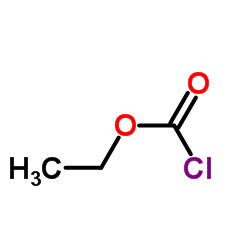 CAS#:541-41-3
CAS#:541-41-3 CAS#:79-41-4
CAS#:79-41-4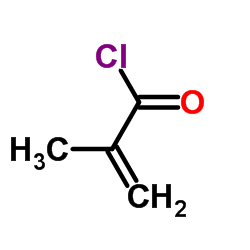 CAS#:920-46-7
CAS#:920-46-7 CAS#:115-11-7
CAS#:115-11-7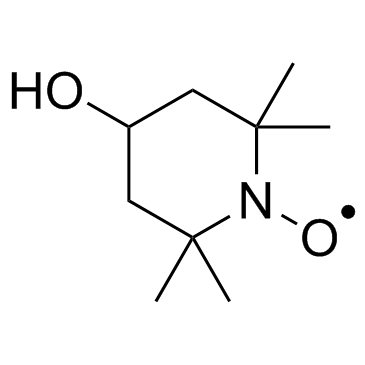 CAS#:2226-96-2
CAS#:2226-96-2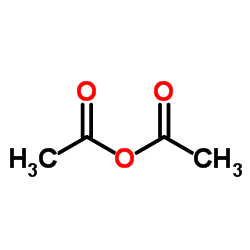 CAS#:108-24-7
CAS#:108-24-7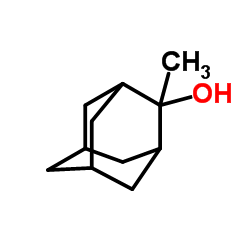 CAS#:702-98-7
CAS#:702-98-7 CAS#:6900-35-2
CAS#:6900-35-2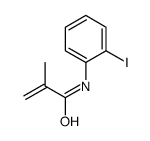 CAS#:108501-85-5
CAS#:108501-85-5 CAS#:4655-34-9
CAS#:4655-34-9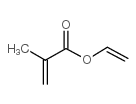 CAS#:4245-37-8
CAS#:4245-37-8 CAS#:22414-62-6
CAS#:22414-62-6 CAS#:80-62-6
CAS#:80-62-6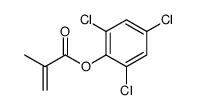 CAS#:18967-27-6
CAS#:18967-27-6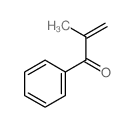 CAS#:769-60-8
CAS#:769-60-8
